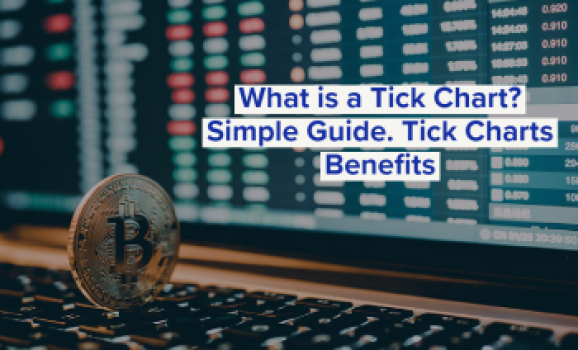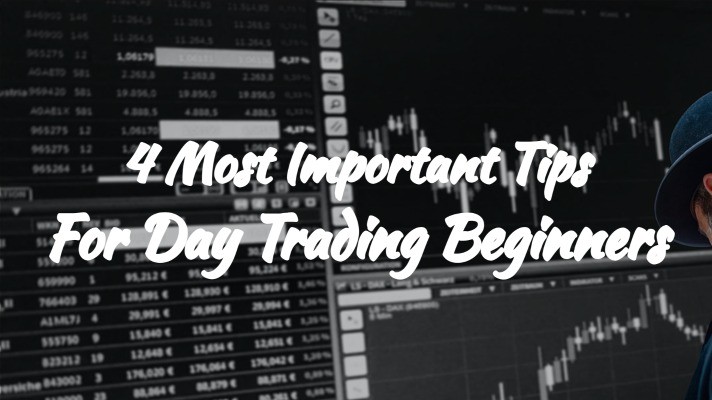The tick chart is a technical analysis tool designed to show the price movements of stocks in real-time on a chart. Technicians can use the information from tick charts to help predict future stock fluctuations and provide information about support or resistance levels. This post introduces the tick chart, including what it is, how it works, and the benefits of using it.
What is a Tick Chart?

The tick chart is a simple and effective way to avoid market noise. Tick charts track activity in set units, such as transactions or trades. For example, the tick chart may create a new bar for every 100 transactions. As the same activity creates each bar, it is comparatively easy to focus on the trend over time of the chart compared to a time-based chart where each bar may have different amounts of activity.
A tick-based chart also referred to as a 1000 tick chart, represents 1000 trades of any size. A thousand ticks could be one trade of 1000 contracts/shares or 10,000 shares. Combining the two tools — volume and a 1000 tick chart — will give traders an accurate picture of the market’s health.
Proponents of tick charts argue that time is static, and they focus more on the stock’s movement than on the period in which it moved. In a short time, they can see a change in the stock price and significant movements in volume. This is much more valuable for them than watching the price along with a time-based chart.
Tick charts are a popular tool for financial traders to help navigate the unforgiving whipsaw of the market. Tick charts often rely on algorithms that emulate automated trading patterns to mimic live price movements closely.
Benefits of a Tick Chart
A time-based chart makes a huge difference. The first bar on the chart represents the opening of trading, but there’s a big difference between the activity during lunchtime and after-hours trading. Both bars represent the same amount of time, but the activities during those periods vary widely.
Noise Reduction
Traders can reduce the amount of noise in an indicator by using a tick chart. It does this by filtering out the “stuck” trades and removing them from the indicator. Because fewer trades are conducted during sluggish periods like lunchtime (about 12:00 EST) or pre-market, a tick indicator will take a long time to develop.
The time-based tick chart is no good when volatility is high. A few quick bars can be seen on a time-based bar chart when the market is very active. It’s no good because you’ll have only a few bars to give you insight. The ticks chart gives you more data because it shows every transaction and makes micro-trends easier to spot.
Detects When to Look for Smart Money
One of the most important principles in technical analysis is to combine volume with a price. This helps you distinguish between a trend supported by smart money and one that isn’t. It’s a good way to know whether the trend is likely to continue or not.
Leveling of the After and Pre-Market Hours
During the day, the market volume is fairly thin and fragmented. This makes it hard to monitor market activity. Tick charts offer a solution to this problem. They often reveal important information that traders can trade outside of the market session.
Best Time to Use a Tick Chart
Many traders employ a combination of chart types. Switching to a tick chart is logical during low, range-bound markets because a time-based chart only whipsaws you. When you use a tick chart, you can only trade when a particular volume of market action has occurred.
Tick charts make things easier since you can adjust when markets undergo episodes of intense volume and instability. You select a bigger tick interval. If you’re using a 1,000 tick chart, consider switching to 2,000. On the other hand, during the episodes of low fluctuation that have typified the present bull market’s final stages, you will need to reduce your tick chart recess.
Using Tick Charts on Various Platforms
There are no two similar Tick data streams.
That’s why two Tick Charts with different data streams will not match up perfectly. There is usually no issue with time-based charts, such as the five-minute chart. Your charting system utilizes the time-stamped info from the trade to build the bar.
On the other hand, a Tick Chart draws fresh bars determined by the number of completed trades. The trade count could be:
- Processed by the info feed source
- Set the re-counting to begin at various locations
- The info provider consolidated the data to cut on bandwidth requirements.
- Trading opportunities lost due to temporary Internet outages
- The data is analyzed out-of-sequence due to multi-threading on the user’s device
Tick Charts with TradeStation
Rather than using the Tick input values, the volume indicators on the Tick Chart use trade volume data. Your symbol information cache may have become faulty or overloaded if the Tick Charts load sluggishly. To sort out the problem, consider re-building your cache. TradeStation offers various options and educational resources for traders.
Learn how to use the Tick Chart in Chart Analysis
What is a Tick Chart? Simple Guide. Tick Charts Benefits
Tick Charts with TradingView
The future of charting software is web-based. TradingView, a financial and technical analysis platform, can be accessed on any web browser. Gone are the days of accessing charts and tools via a clunky piece of software that you need to install on your laptop. Now, you can open your web browser and access your charts and financial tools at any time.
Any trader will tell you that a technical analysis platform must be robust. It cannot change data or charts when you reload them after a brief time-lapse, and it certainly shouldn’t alter data when it’s real-time. TradingView’s failure in this regard makes it unpalatable for serious investors.
TradingView: Guide How to Use Tick Charts
What is a Tick Chart? Simple Guide. Tick Charts Benefits
Tick Charts with Interactive Brokers
The data collected and transmitted by Interactive Brokers (IB) through its Trader Workstation Software (TWS) isn’t a real tick-by-tick data stream. IB takes snapshots of transaction data numerous times per second, aggregating all trades that occurred within that period. Consequently, time-based charts will be accurate, but a Tick Chart built with IB data may not.
Questions and answers
What are tick charts for day trading?
Tick charts are a type of chart used by day traders to track the price movement of a security on a tick-by-tick basis. A tick represents a single trade or change in the price of a security, and a tick chart plots a new bar (candlestick or line) for each tick that occurs. Tick charts can provide a more detailed and granular view of price action than time-based charts, and are often used by day traders to identify short-term trends and opportunities for scalping or quick trades.
How do I use tick charts for day trading?
To use tick charts for day trading, you will need a trading platform or charting software that supports tick charts. You can then select the tick chart option and customize the parameters, such as the number of ticks per bar and the type of chart (candlestick, line, etc.). Some traders may also use tick charts in conjunction with other indicators or technical analysis tools to identify trade signals and make more informed decisions.
What is the difference between tick charts and time charts?
The main difference between tick charts and time charts is the time frame they are based on. Time charts are based on a fixed time frame, such as 5 minutes, 15 minutes, or 1 hour, and a new bar is plotted on the chart at the end of each time interval. Tick charts, on the other hand, are based on the number of ticks (trades or price changes) that occur, and a new bar is plotted for each tick. Tick charts can provide a more detailed and granular view of price action, but they can also be more volatile and subject to noise.
Bottom Line: What is a Tick Chart?
Traders commonly use tick charts to analyze market data. They are, in fact, a more modern variation of the OHLC chart type, which is the most commonly used chart type to display real-time price and volume information. Over the last few years, tick charts have gained popularity thanks to the increasing use of computerized trading.








Can I use tick charts with Interactive Brokers?
Yes, Interactive Brokers is a brokerage firm that supports tick charts. You can use Interactive Brokers’ trading platform, TWS (Trader Workstation), to access tick charts for a variety of securities, and customize the parameters such as the number of ticks per bar and the type of chart. You can also use Interactive Brokers’ charting tools and indicators to analyze tick charts and make informed trading decisions.
Does TradingView have tick charts?
Yes, TradingView is a popular charting and analysis platform that supports tick charts. You can use TradingView’s tick chart feature to track the price movement of a security on a tick-by-tick basis, and customize the parameters such as the number of ticks per bar and the type of chart. TradingView also offers a wide range of technical indicators and tools for analyzing tick charts and other types of charts.